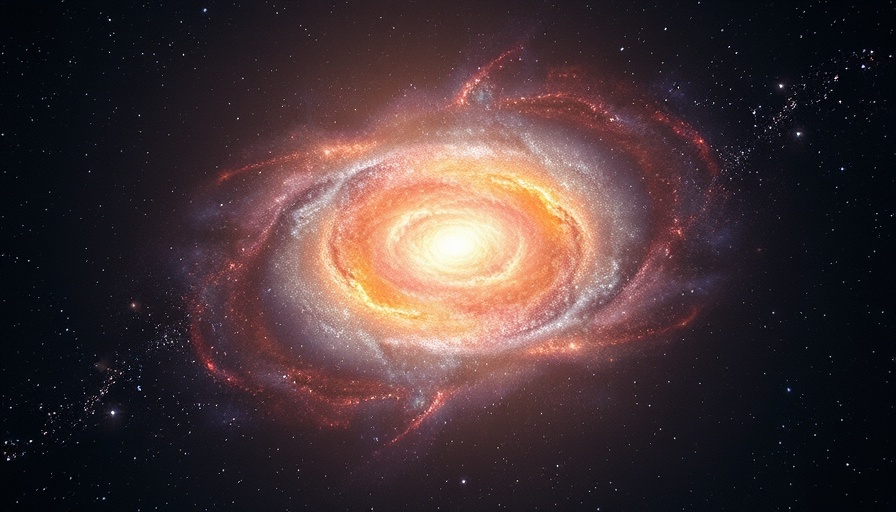
The Cosmic Cannibal: Understanding NGC 3640
In a stunning revelation from the Very Large Telescope (VLT), astronomers have discovered that the elliptical galaxy NGC 3640 is not just misshapen but also a celestial predator, known for its voracious appetite in consuming smaller galaxies. This phenomenon, termed galactic cannibalism, showcases a dynamic aspect of the universe where gravitational forces dictate the fate of galaxies located in proximity to one another.
A Dance of Mergers: Galactic Interactions Unfold
NASA's recent observations focus on NGC 3640’s impending collision course with NGC 3641. As these two entities edge closer to one another, the gravitational interactions become increasingly potent, laying the groundwork for a dramatic merger. As galaxies collide, it often results in a transformation, a ripping apart of their original structures, yet simultaneously paving the way for new star systems to form.
The Mysteries Within: Fossil Stars of NGC 3640
Past cosmic encounters have left their mark on NGC 3640 through what astronomers term 'fossil stars.' These ancient celestial bodies serve as markers of a violent past filled with galactic conquests. Data suggest that NGC 3640 has absorbed numerous smaller galaxies over billions of years. Meanwhile, the distinct lack of distortion in NGC 3641 indicates that it may still have some time before becoming the next meal in this cosmic theatre.
Why Galactic Cannibalism Matters
Galactic mergers like the one involving NGC 3640 and NGC 3641 are not isolated events; rather, they are indicative of a fundamental process in the evolution of the universe. Study of such phenomena provides critical insights into the lifecycle of galaxies, offering predictions about future cosmic events, including the potential merging of our Milky Way with the Andromeda Galaxy in the distant future.
As humanity continues its exploration of the cosmos, understanding these vast, intricate processes allows us to appreciate the transient nature of the universe. From developing new technologies to enhance our observational capabilities to engaging in conservation efforts that minimize light pollution, the implications of this research are profound.
Conclusion: The Ever-Changing Landscape of Space
The findings around NGC 3640 serve as a reminder of the dynamic and continuously evolving nature of our universe. As we unravel the mysteries of these galactic giants, we must also consider our role in preserving the untainted views of the cosmos. Stay tuned for more exciting revelations as the field of astronomy develops, shedding light on our place in this grand cosmic narrative.
 Add Row
Add Row  Add
Add 




Write A Comment